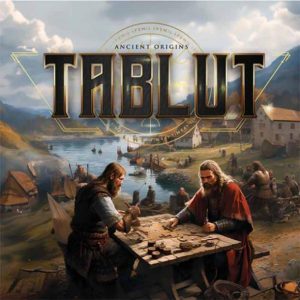“Tablut,” an ancient game, has endured for centuries.
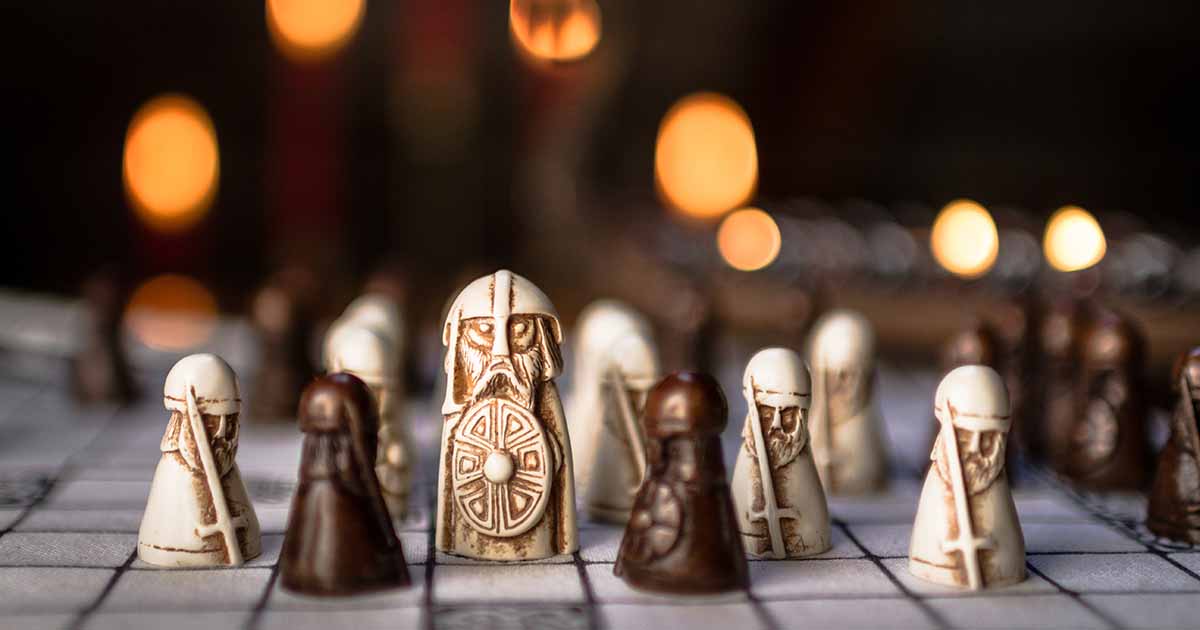
Ancient times were not all about warfare, survival, politics or arduous work. No, our distant ancestors knew how to have fun as well, and to enjoy their free time. That is why board games have been well documented across the world, reaching as far back as pre-Christian times.
Among these, Hnefatafl stands out as very popular, especially with the ancient Vikings. Played for centuries, Hnefatafl, also known as tafl, sadly did not survive fully. But special versions of it did.
Tablut is one of these variations, a game played amongst the Sami people of Lapland up until the 18th century. Luckily, its rules were documented, and it is now becoming quite popular once more.
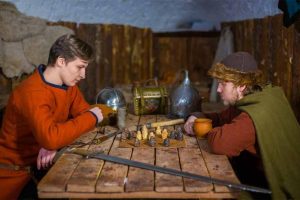
Two men in Viking costume playing Hnefatafl, also known as tafl, of which Tablut is a variation played by the Sami people of Lapland. (happy_finch / Adobe Stock)
Tablut as Sami Heritage and an old Scandinavian Pastime
The history of the board game known as Tablut, and Hnefatafl in general, is somewhat obscure. The game is believed to have originated in Scandinavia, amongst the Vikings and their ancestors, and has roots that trace back over a thousand years. The name Hnefatafl itself is Old Norse and translates to “king’s table” or “king’s board.” Other translations have been proposed, like “the table of the fist,” from Old Norse hnefi, meaning “fist.” In this sense, the fist denotes the king, guarded in the center of the board.
The board game was certainly played across various Nordic and Viking communities, as evidence of Hnefatafl has been found in numerous archaeological excavations. The exact rules of the game may have varied among different regions and communities, contributing to the existence of multiple variants like the Sami Tablut.
Naturally, as the Vikings spread across the world, reaching and settling many new places, they brought their board game with them. This led to the appearance of many regional variations, such as Tawlbwrdd in Wales, Brandubh in Ireland, Ard Rí in Scotland or Alea Evangelii in Anglo-Saxon England. Most of these have been lost to time, but Tablut from Lapland managed to survive for a very long time. Today, it is the best-known version of the Tafl games.
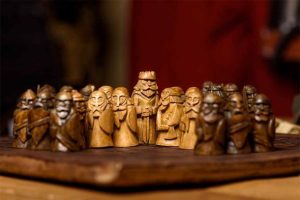
Replica carved wooden Hnefatafl board game. (Olga Makukha / Adobe Stock)
Join the growing community playing this classic strategic game, produced by Ancient Origins, based on the most accepted rules, and with a beautifully designed and individually handcrafted board and pieces, available from the Ancient Origins shop here. Great as a novel Christmas gift this year.
Tablut Serves as Proof of Sami and Norse Connections
The Sami People inhabit a vast region known as Sapmi (historically known as Lapland), situated in Northern Scandinavia and stretching across four nations – Finland, Russia, Sweden, and Norway. These Uralic-speaking peoples have lived here for roughly 3,500 years. Over time they have gradually come into contact with the Germanic peoples who settled in Southern Scandinavia, later emerging as the Vikings or the Norse. Through this cultural diffusion, the tafl games were adopted by the Sami and became quite popular. The rules were adapted just slightly.
Tablut is a strategy game that typically involves two players. The game is played on a square board with a 9×9 grid, and it uses distinctive pieces for each side. One player controls the king piece in the center, as well as a group of defenders around it, while the other player controls a larger group of attackers on the sides.
The game’s objective varies depending on whether you play as the defenders or attackers. The defenders aim to help the king escape to one of the four corner squares of the board, while the attackers aim to capture the king by surrounding it on all four sides.
The movement of pieces is typically orthogonal (horizontally or vertically) rather than diagonal. This ancient board game involves a combination of strategic positioning, blocking opponents’ moves, and capturing enemy pieces. The rules can vary, as different regions and communities have developed their own variations of Tablut.
Tablut and other variations of Hnefatafl have gained some popularity in recent years as people rediscover traditional board games and appreciate the historical and cultural aspects of these games. There are even modern adaptations and online versions of Hnefatafl available for those interested in playing this ancient game.
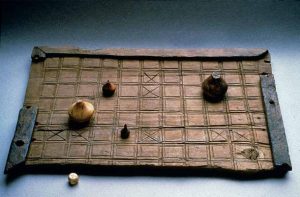
Ancient Hnefatafl board game, a precursor to Tablut, dating back to 1100s and discovered in the 1980s in Norway. (CC BY 2.0 DEED / NTNU Vitenskapsmuseet)
A Revival of a Popular Ancient Game
Interestingly, Tablut was played by the Sami up until the 18th century, long after the Vikings were gone. By that time, its rules had been written down, saving them for posterity. Today, Tablut is once again becoming a popular pastime for people around the world, not just in Scandinavia. Even though it died out after the 18th century, Tablut did not disappear completely. The rules have been translated, adapted and the game is once more enjoyed.
Luckily, many ancient board games have once again caught the interest of fun-seeking people. Hnefatafl has also been revived, even though it was gone for many centuries. Modern Viking enthusiasts and game developers have contributed to the preservation and popularization of these ancient games by creating replicas, adapting rules and even organizing tournaments. Thanks to this revival, we too can chase away boredom like the Old Norse did – with a quality board game that requires wits, strategy and patience!
